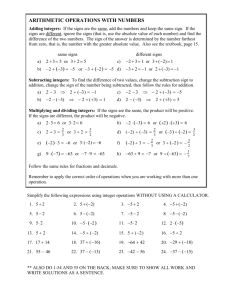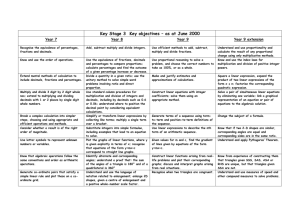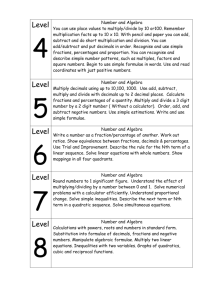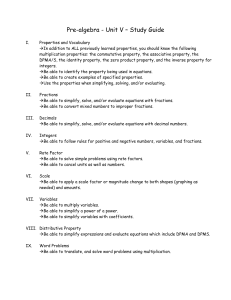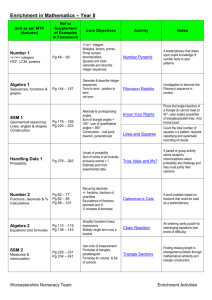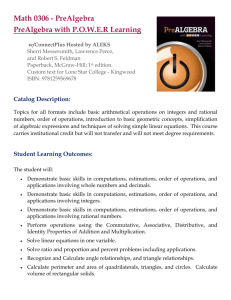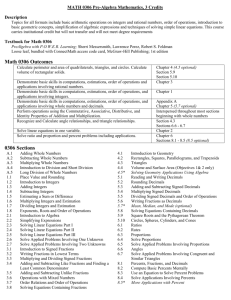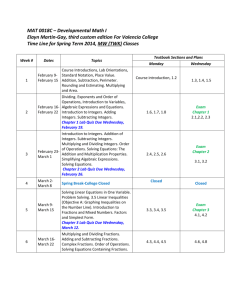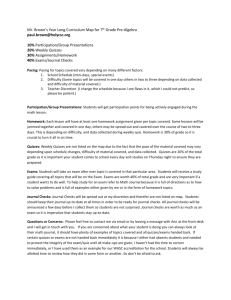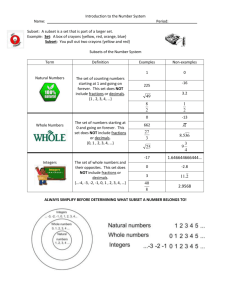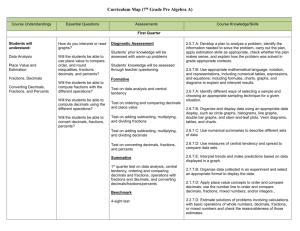Year 7
advertisement
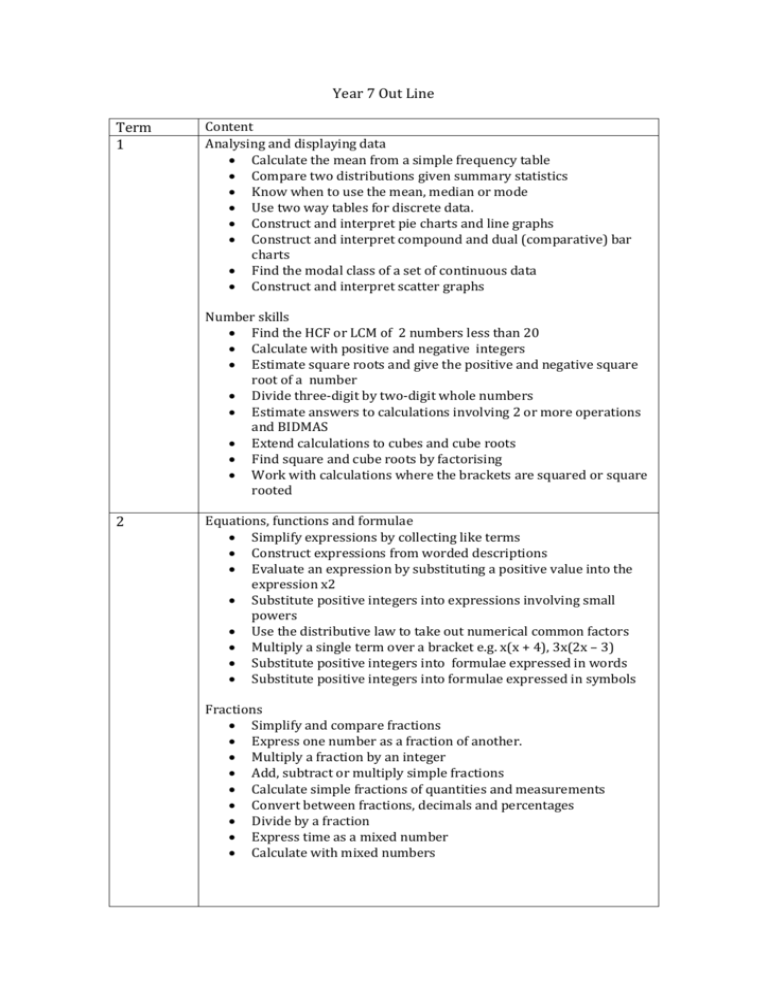
Year 7 Out Line Term 1 Content Analysing and displaying data Calculate the mean from a simple frequency table Compare two distributions given summary statistics Know when to use the mean, median or mode Use two way tables for discrete data. Construct and interpret pie charts and line graphs Construct and interpret compound and dual (comparative) bar charts Find the modal class of a set of continuous data Construct and interpret scatter graphs Number skills Find the HCF or LCM of 2 numbers less than 20 Calculate with positive and negative integers Estimate square roots and give the positive and negative square root of a number Divide three-digit by two-digit whole numbers Estimate answers to calculations involving 2 or more operations and BIDMAS Extend calculations to cubes and cube roots Find square and cube roots by factorising Work with calculations where the brackets are squared or square rooted 2 Equations, functions and formulae Simplify expressions by collecting like terms Construct expressions from worded descriptions Evaluate an expression by substituting a positive value into the expression x2 Substitute positive integers into expressions involving small powers Use the distributive law to take out numerical common factors Multiply a single term over a bracket e.g. x(x + 4), 3x(2x – 3) Substitute positive integers into formulae expressed in words Substitute positive integers into formulae expressed in symbols Fractions Simplify and compare fractions Express one number as a fraction of another. Multiply a fraction by an integer Add, subtract or multiply simple fractions Calculate simple fractions of quantities and measurements Convert between fractions, decimals and percentages Divide by a fraction Express time as a mixed number Calculate with mixed numbers 3 Angles and shapes Solve simple geometrical problems, using reasoning Calculate angles in a triangle Identify all the symmetries of 2-D shapes Find co-ordinates of points determined by geometric information Classify quadrilaterals by their geometric properties Calculate the interior and exterior angles of regular and irregular polygons Decimals Order positive and negative decimals Round numbers to two or three decimal places Add and subtract integers or decimals Multiply and divide integers or decimals Use knowledge of place value to calculate the product of two decimals where original fact is given Find equivalent fractions, decimals and percentages Express one number as a percentage of another Find the outcome of a given percentage increase or decrease 4 Equations Solve simple linear equations with integer coefficients Solve two-step linear equations with integer coefficients Substitute integers into formulae and solve Solve equations of the form a(x +/– b) = c(x +/– d) Find a positive and negative square root as a solution of an equation involving x² Construct and solve equations of the form a(x +/– b) = c(x +/– d) Use systematic trial and improvement to find the approximate solution to equations 5 Multiplicative reasoning Reduce a ratio to its simplest form Convert between measures Simplify a ratio expressed in different units Compare ratios by changing them to the form 1:m or m:1 Divide a quantity into 2 or more parts in a given ratio Simplify or write ratios using fractions, decimals or percentages Solve word problems involving proportion Use the unitary method to solve simple word problems involving ratio and proportion Perimeter, Area and Volume Use a formula to calculate the area of triangles Find the area of a parallelogram or trapezium Calculate the perimeter and area of shapes made from rectangles Sketch nets of 3D solids Find the volume of cubes or cuboids or solids made from cuboids Find the surface area of simple cuboids Convert cm3 to ml and litres and vice versa Convert between area measures 6 Sequences and graphs Generate terms of a linear sequence Find a term given its position in a sequence Describe the nth term in an arithmetic sequence Recognise geometric sequences Find the term-to-term rule for geometric sequences and continue to the next few terms Read and plot x and y co-ordinates in all four quadrants Find the midpoint of a line segment Generate four quadrant coordinate pairs of simple linear functions Plot and recognise graphs of y = x and y = –x and graphs parallel to x or y axis

